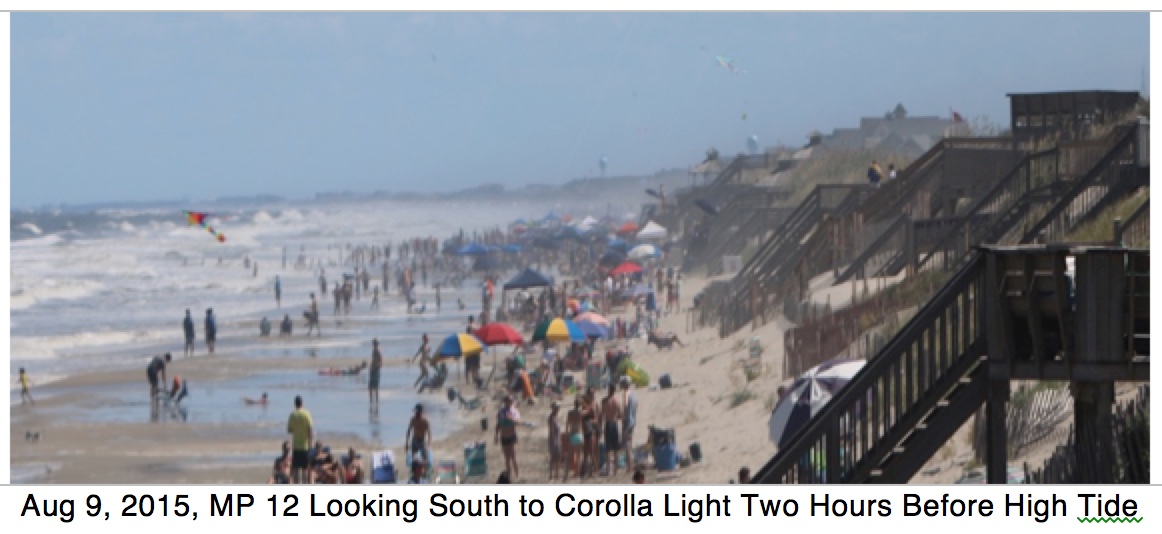Suggested changes to the Beach Measurement Program Statement of Work
/Shown below is a 2012 aerial view of a Corolla oceanfront home taken from the County’s GIS application. Below it is a side elevation view cross-section sketch. Labels on the diagrams indicate the key parameters necessary to understand the risks of future property value degradation/ loss due to storms.
Exhibit: Key Metrics Needed to Project Future Impact of Beach Erosion on County Tax Base
For this property the toe of the dune is about 5 ft above sea level and the peak of the dune about 16 feet above sea level. Despite sand fencing, beach grass planting and bringing in 20-30 truckloads of sand since 2012 the peak of the dune has moved about 6 feet closer than noted in the figure above to the house and pool..
For County management the key questions that need to be answered are as follows:
What is the width of the useable dry sand beach and how is this width changing?
If average beach erosion continues how many years before the swimming pool and house foundation will be undermined? What is the tax impact when this occurs?
After what period of average beach erosion will the pool or house infrastructure be subject to undermining by a single hurricane event like Isabel?
When and where must the County begin beach nourishment to prevent the possibility of significant tax value loss due to an Isabel scale event?
Suggested changes to the County’s statement of work
Lidar measurements – The contractor should indicate the following:
with reference to the leading eastern faceof each oceanfront home:
· Distance to the peak of the dune
· Elevation of the peak of the dune
· Distance from peak of dune to toe of dune
· Elevation of the toe of the dune
· Width of the useable dry sand beach
· Distance to high water mark ( roughly 2 ft above mean sea level)
· Distance to low water mark ( roughly 2 ft below mean sea level)
The way these measurements are done a truck with the lidar instrument is driven slowly along the beach and continuous measurements are made noting the GPS (x,y,z) location of the truck at each instance. Doing these every 100 feet or so should be little extra time or effort, just extra disk storage space for the data. It is a simple matter to extract this information from the data set.
Beach erosion model– The beach erosion model should use as input parameters the off shore profile as well as the lidar data to project for the County the following output parameters:
· Projection of the annual trend of movement of the toe and peak of the dune (this should correspond roughly to the USACoE projections. Contractor should explain the differences in their approach to this projection to that of the USACoE)
· Projection of the likely single event westward movement of the toe and peak of the dune due to a future Hurricane Isabel type storm ( of similar storm surge height, wind direction, wave height and duration )
· Projection of the likely single event westward movement of the toe and peak of the dune due to a future Hurricane Isabel type storm with half the intensity ( of similar storm surge height, wind direction, wave height and duration )
· Projection of the likely single event westward movement of the toe and peak of the dune due to equivalent storms as the 2018 nor’easters ( of similar storm surge height, wind direction, wave height and duration )
· Contractor should describe the methodology underlying these projections.






